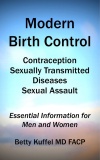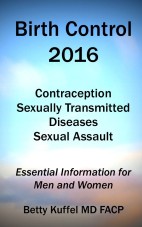Cognitive Dissonance
Over the next few days I will post information on the following list of topics:
 Gender and Sexual Identity
Gender and Sexual Identity
We Are All Different
Human Sexuality
Birth-assigned or Biological Sex: Male, Female, Other (third sex)
Social Acceptance and Civil Rights of LGBTQ People
LGBTQ Medical Care
Equality for All
To help understand the LGBTQ issues, definitions of terms are included at the bottom of today’s post.
Cognitive Dissonance
Cognitive dissonance as described, for example by renowned social psychologist Leon Festinger, occurs when a person holds two or more contradictory beliefs at the same time causing significant distress. It can also occur when new information conflicts with existing beliefs, ideas or values. Another way to state this is, stress results from mutually exclusive beliefs or attitudes held by one individual.
I begin this series of blogs with an explanation of cognitive dissonance because people are commonly confronted with contradictory beliefs in life causing significant problems, destroying families and damaging lives. Many lives have been disrupted when parents reject children who are LGBTQ. They are ostracized and sometimes disowned because they do not conform to long held parental beliefs.
If the contradictory beliefs carry high value, the person experiences high anxiety and an increased drive to relieve the discomfort. One might say this is the behavior of many Trump voters. Someone with “Christian values” who voted for a man who is the antithesis of these beliefs should be experiencing cognitive dissonance. The behavior of LGBTQ rejection is not rational or science-based, it is related to an unfounded belief system.
The topic I plan to address has no direct relationship to Mr. Trump, but instead relates to the actions of conservatives in the State of North Carolina and elsewhere who are anti-LGBTQ. They are imposing their personal religious beliefs on American citizens in contradiction to stated Christian values of acceptance and love. They are also rejecting scientific information and First Amendment Rights.
Cultural or Descriptive Terms:
Birth-assigned sex: Male or female based on external anatomy and chromosomes.
Binary: Male or female
Cis-gender: Gender identity matches genital anatomy. (ex: A male who identifies as a male.)
Gender expression: Presentation to world as feminine, masculine or androgynous (combination of both). Expression does not necessarily correlate with birth-assigned sex.
Gender identity: Innate sense of feeling male, female, neither, or a combination of both
Gender nonconformity: Culture norm variation in gender role, ex. toys, playmates, behavior.
Gender dysphoria: Distress that occurs when gender identity and birth-assigned sex are not the same.
Transgender People: “Trans” – A generic term used for gender nonconformity, when gender expression is different from birth-assigned sex. Transgender is an adjective, a description. Transgender used as a noun, ex.: “She is a transgender,” is an incorrect usage of the term.
Transman = Transgender man: Assigned female at birth, is later assigned a masculine gender identity, affirmed male.
Transwoman = Transgender woman: Assigned male at birth, is later assigned a feminine gender identity, affirmed female.
Transsexual: Term is no longer used. Previously used to describe transgender people who requested medical or surgical interventions.
Sexual behaviors: Specific sexual behavior/activities
Sexual orientation: Based on identified gender of physical/emotional arousal. Examples: Transgender man who is attracted to men may identify as a gay man. Transgender woman attracted to women may identify as a lesbian.
Genderqueer: A person of a birth-assigned sex who has a gender identity that is neither masculine or feminine, instead is a combination of the two or fluid. Some prefer this term though it was previously considered derogatory.
References:
Boston University Medical Center http://www.bumc.bu.edu/endo/research/transgender/
American Psychological Association http://www.apa.org/topics/lgbt/transgender.aspx
Psychotherapy Networker, March-April 2016
Interview: Steve Bryson, Bryson Counseling & Consulting
Thanks for following.
Betty Kuffel, MD



 and women. The small booklet provides up-to-date information on aspects of health related to contraception, sexually transmitted diseases, treatment, and avoidance of sexual assault. Many references are included. The 44 page book is available on Amazon. Paperback –
and women. The small booklet provides up-to-date information on aspects of health related to contraception, sexually transmitted diseases, treatment, and avoidance of sexual assault. Many references are included. The 44 page book is available on Amazon. Paperback – 

 In the U.S., discrimination and bias against gay and transgender individuals is common. Here, non-binary (not male or female) gender identity (third or transgender) is not recognized.
In the U.S., discrimination and bias against gay and transgender individuals is common. Here, non-binary (not male or female) gender identity (third or transgender) is not recognized. eature carries characteristics making them unique. Just as a person has blue, hazel, or brown eyes, some are born with heterochromia, each eye is a different color. This trait occurs from the genetic mix. It is often seen in sled dogs, but humans can also have two different colored eyes.
eature carries characteristics making them unique. Just as a person has blue, hazel, or brown eyes, some are born with heterochromia, each eye is a different color. This trait occurs from the genetic mix. It is often seen in sled dogs, but humans can also have two different colored eyes.
